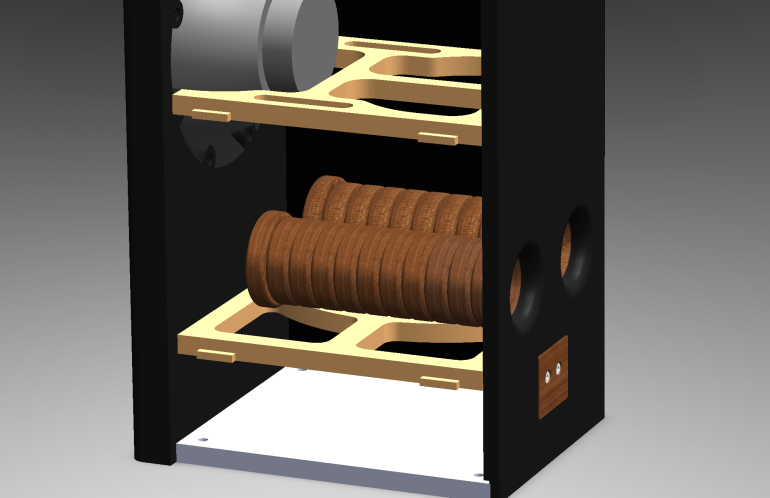“You hear bass, not plumbing.”
Ports are where many loudspeakers betray themselves. At real-world levels, thin plastic can hiss and flex; metal can sing along with a narrow ring. Reference A takes a harder road: each port is machined from wood and flared, inside and out, to shepherd air in a smooth, laminar flow.
That shape matters. When air accelerates through a short, sharp mouth, vortices form and the ear hears them as breath, huff, or a faint whistle that sits on top of the music. Our profiles keep separation clean so the column of air behaves like an extension of the bass system, not a random instrument. The result is transients that start and stop without overhang and low-notes that carry pitch information—the difference between “a note near 40 Hz” and “that’s a low-E with a real string.”
Wood brings another advantage: self-damping. It resists the subtle resonances that hard tubing can add, so what’s left is simple—weight, texture, and a surprising calm even when the room gets enthusiastic.
